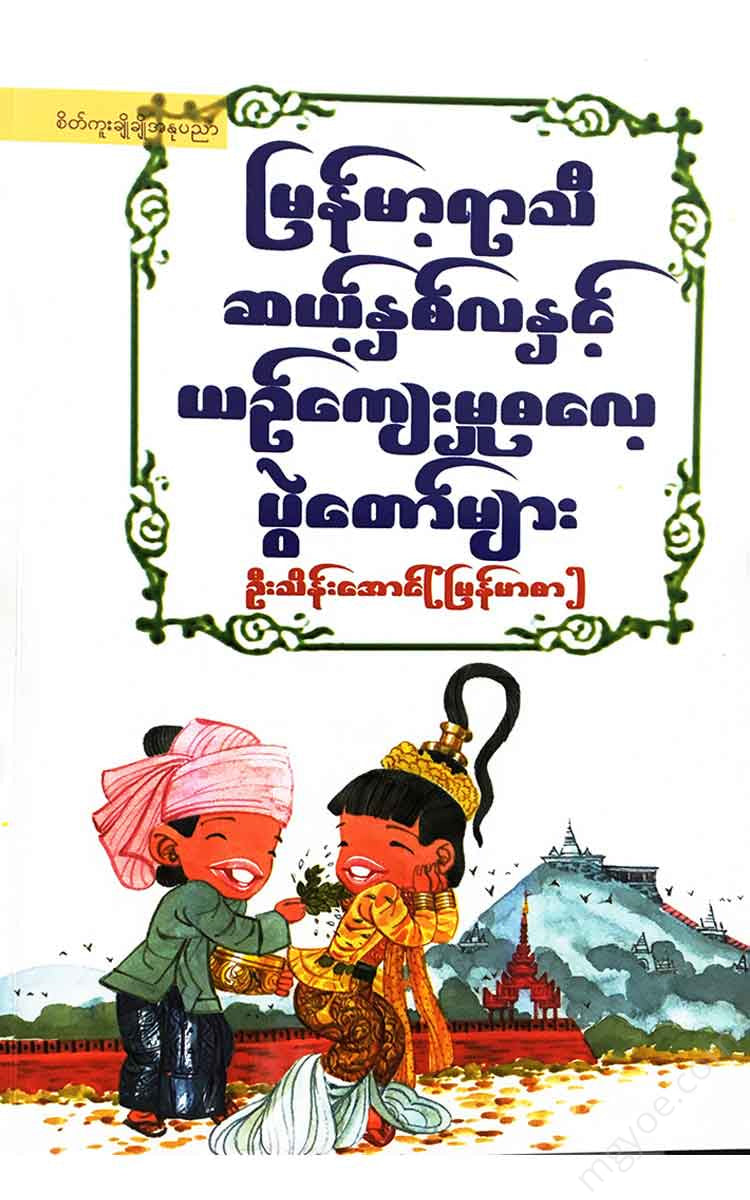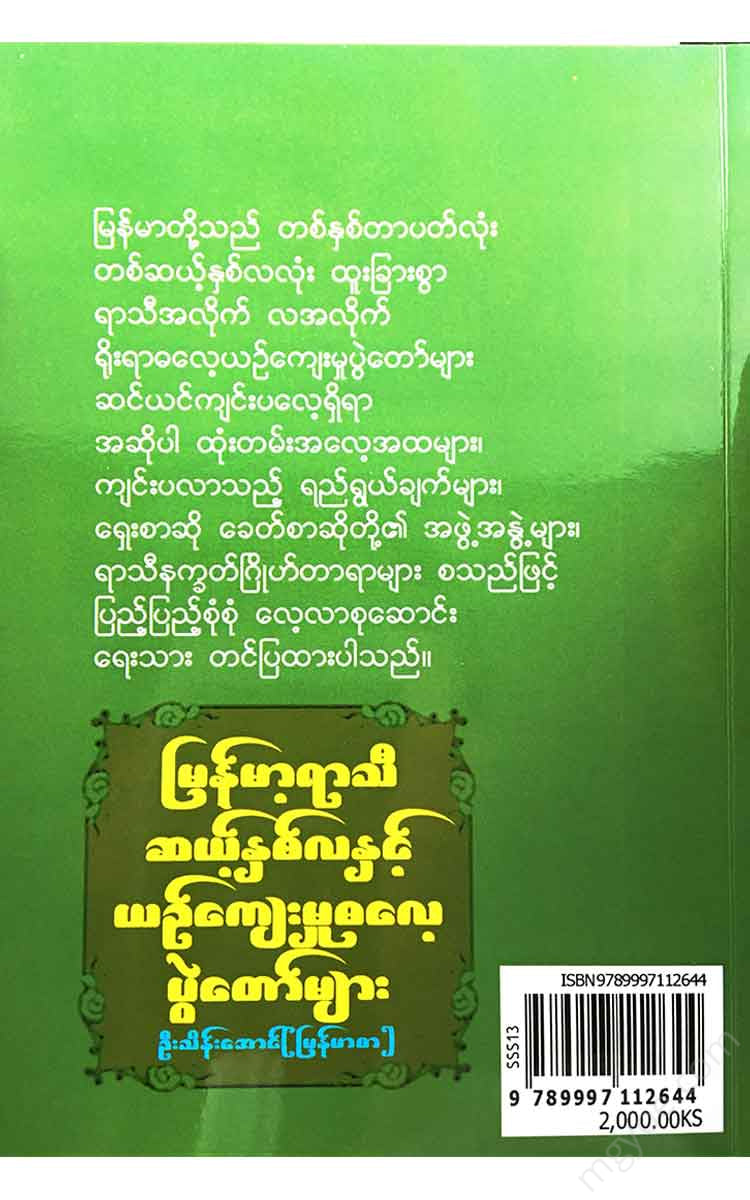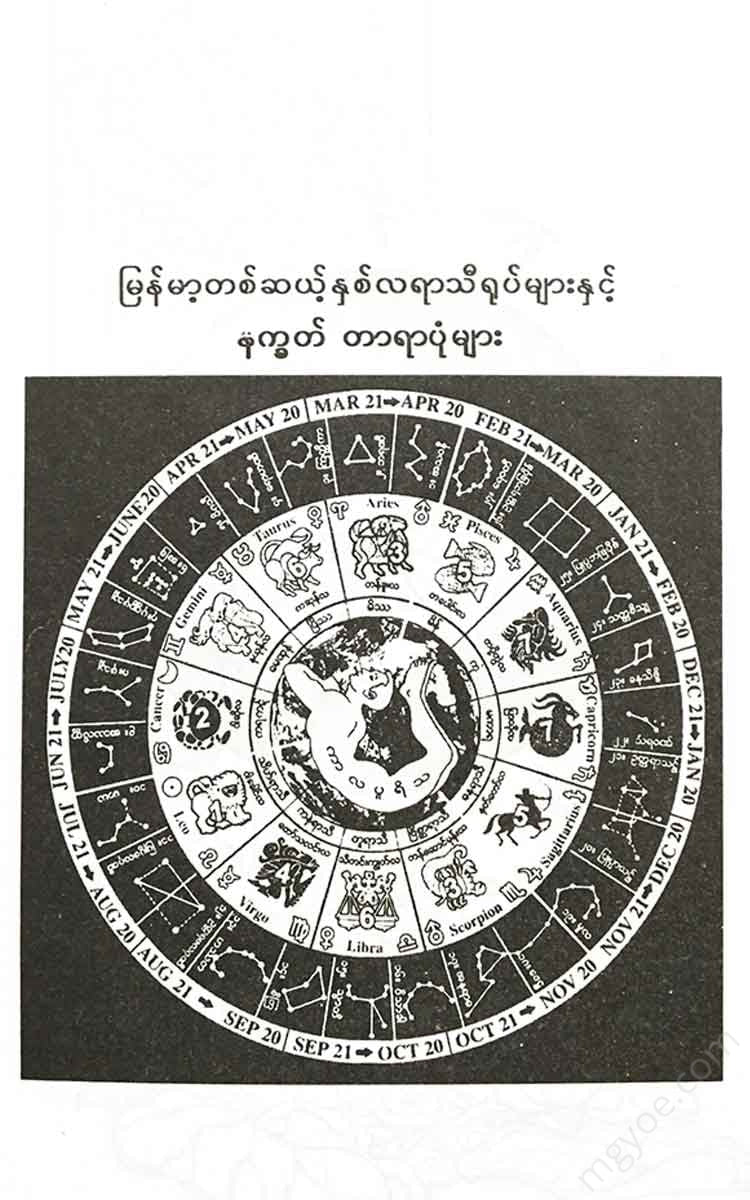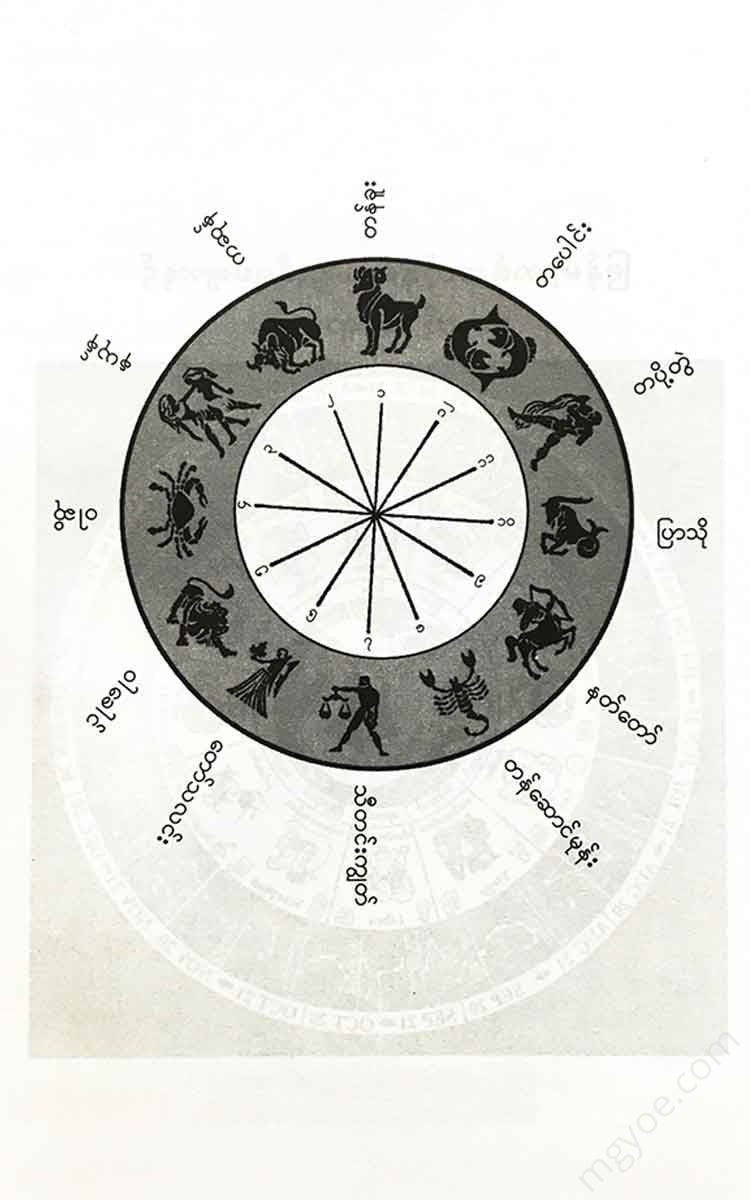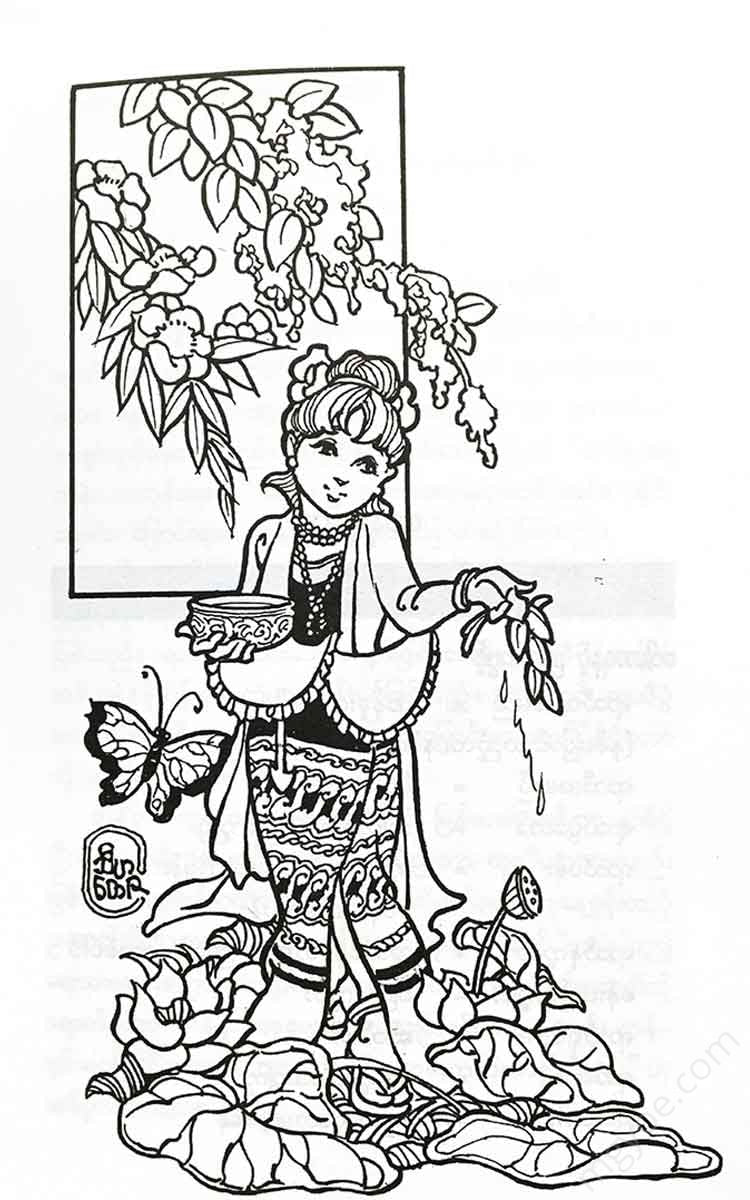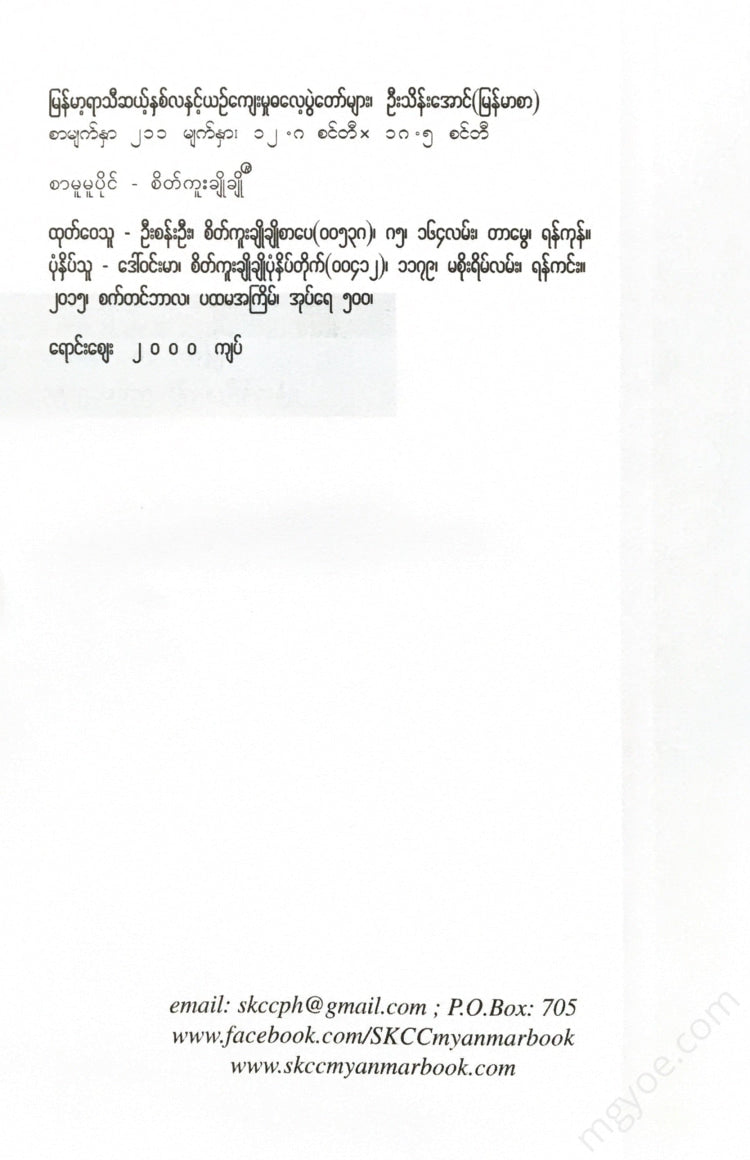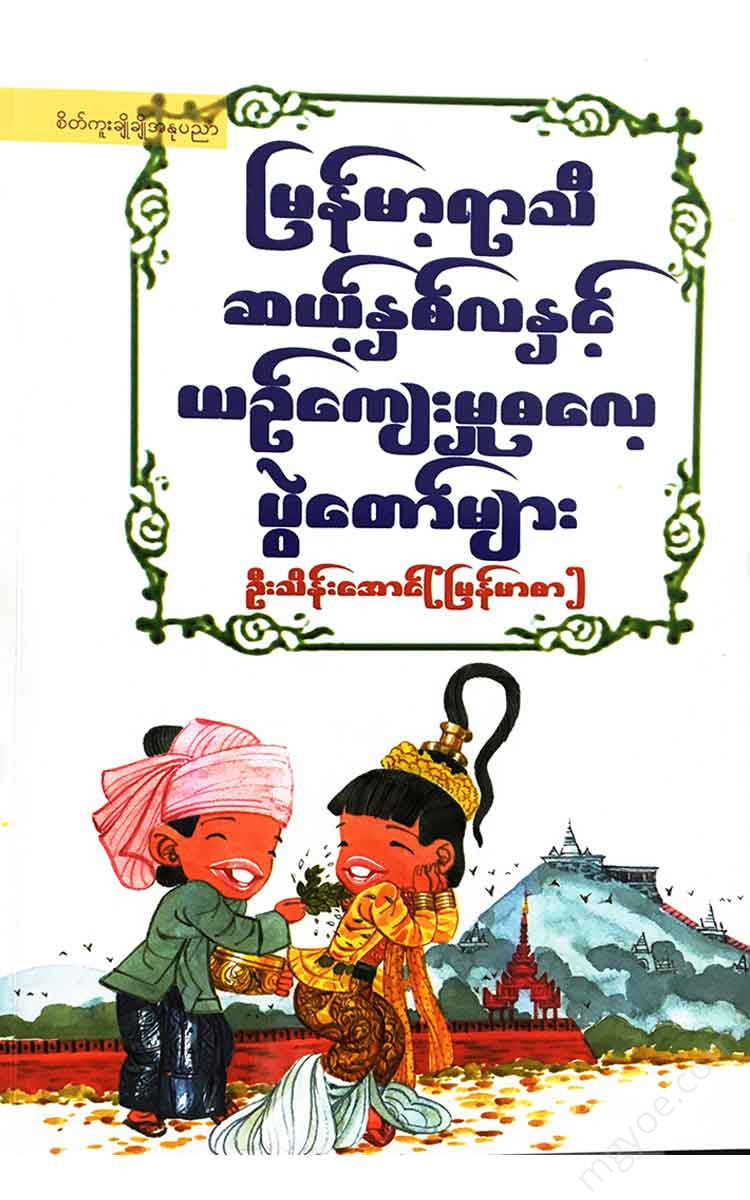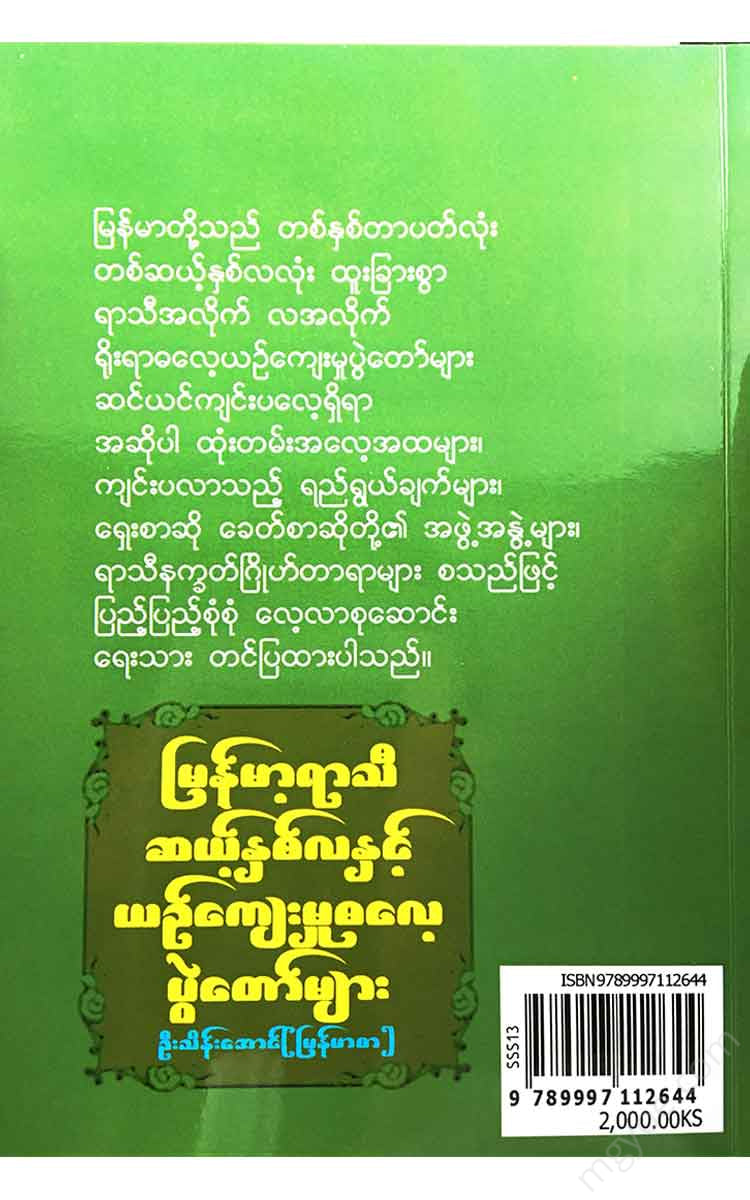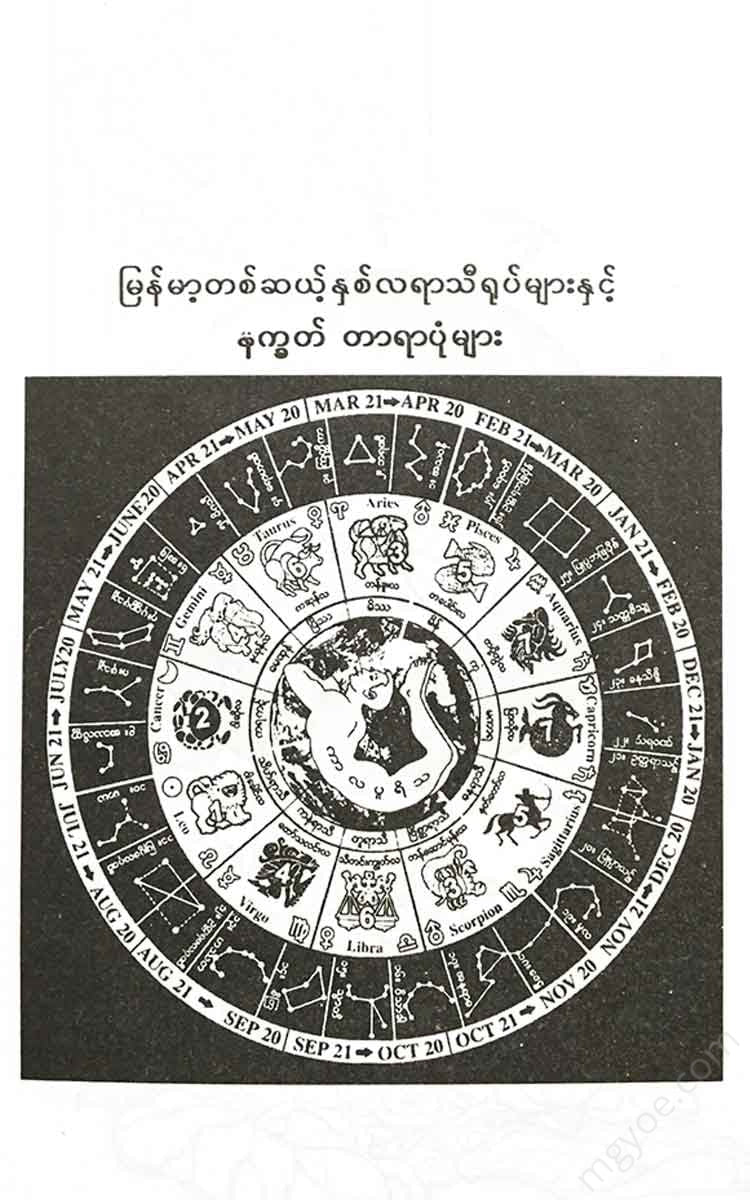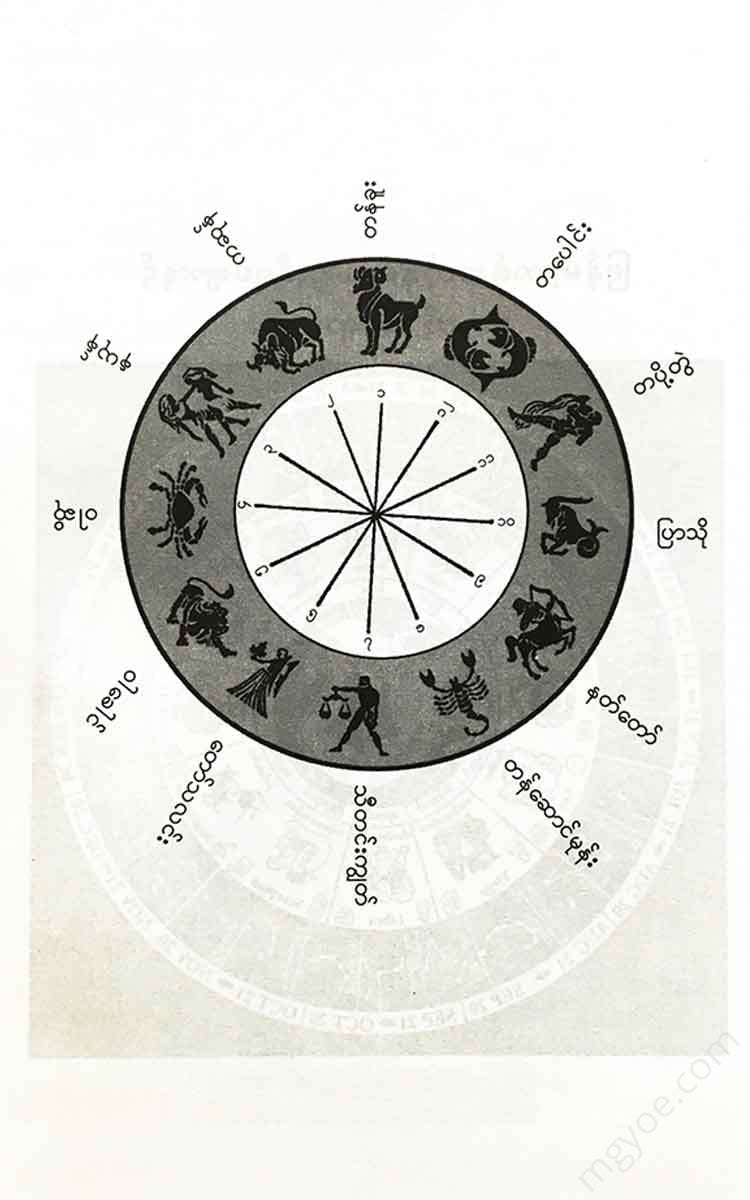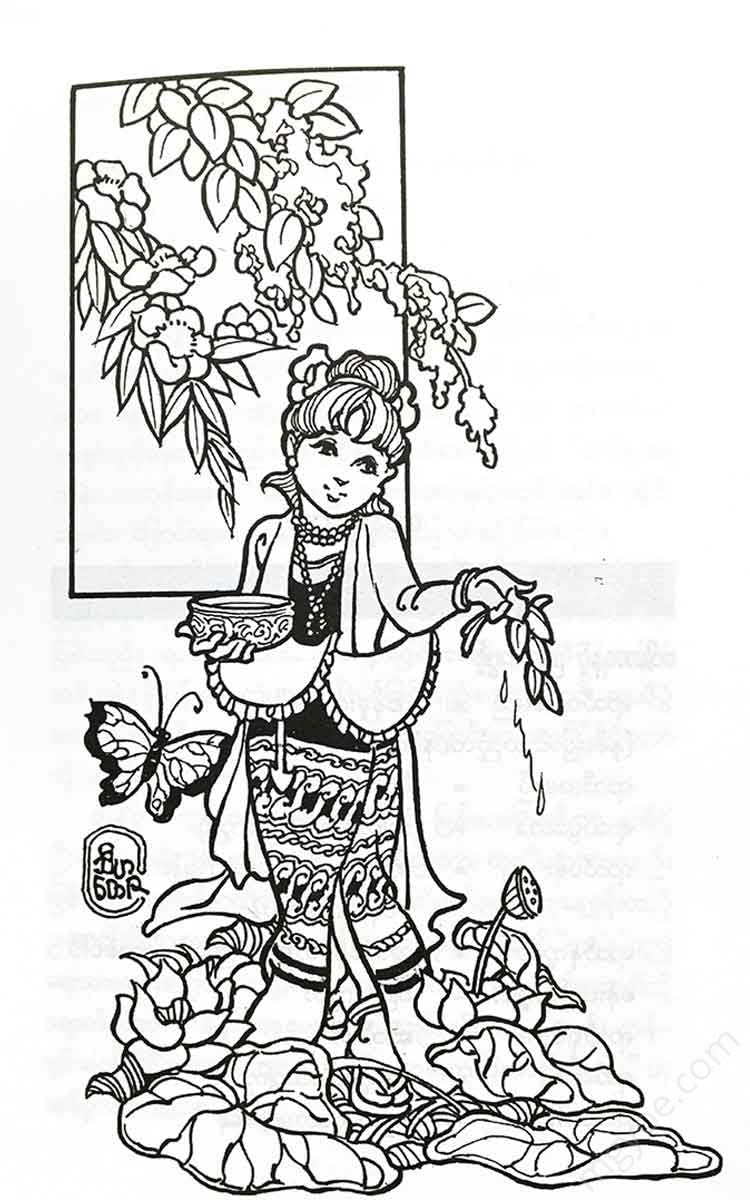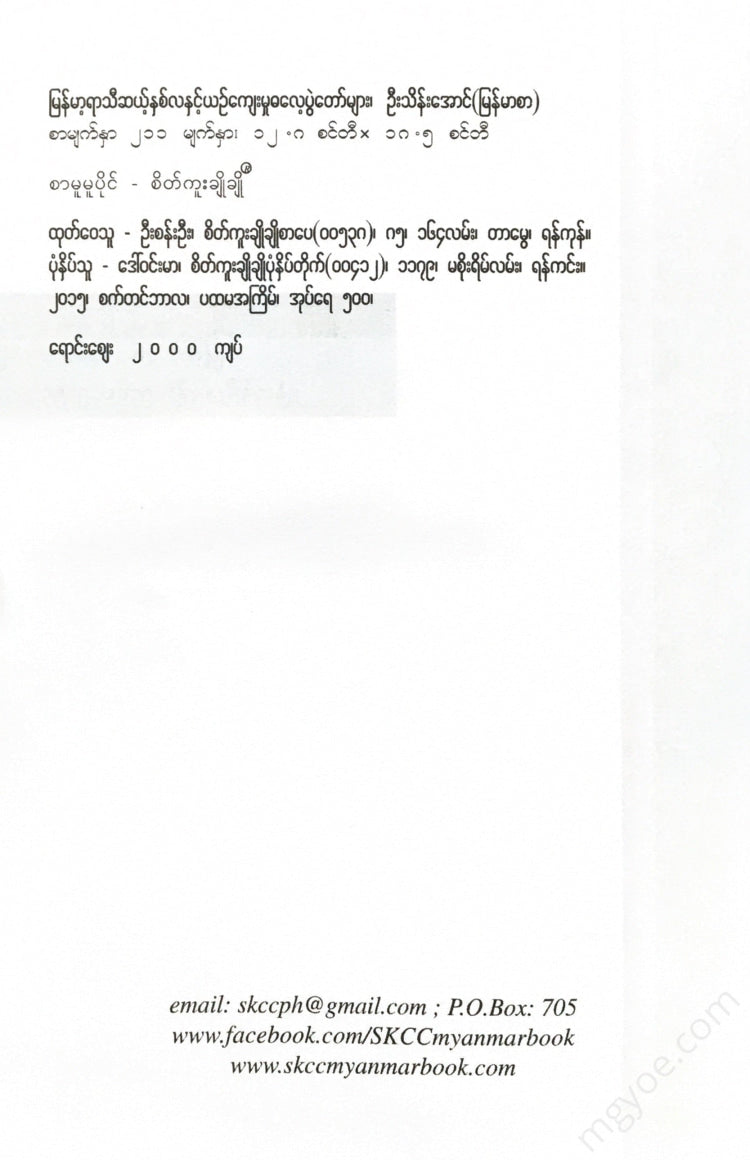စိတ်ကူးချိုချိုစာပေ
U Thein Aung (Myanmar) - The twelve months of the Burmese season and cultural festivals
U Thein Aung (Myanmar) - The twelve months of the Burmese season and cultural festivals
Couldn't load pickup availability
Tagu month
Tagu moon key
Vocabulary and grammar
Name of the month = Tagu (April)
(New Year's Day, New Year's Day)
Season name = Aries
Seasonal festival = Thingyan Festival, New Year's Festival
Seasonal flowers = kankaw flower, pi-tauk flower, ngo flower, rinkhat flower
Zodiac sign = Asthani Bharani, Kartika Tipad
Sanghatanaksha = Chitranaksha
Seasonal figure = goat figure
Days = Wednesday and Friday
Pashto = Thursday and Saturday
Clock = 30 hours of day, 30 hours of night
Tara = fisherman Tara,
Noon = noon
Day = month with no days (29 days)
Tagu is ... Tagu is... the first month of the 12-month Burmese calendar. It falls during the hot and dry summer season, and the temperature often exceeds 48 degrees Celsius. Due to the extreme heat, as the saying goes, "Tangu water dries up, Kason water dries up," wells, lakes, streams, canals, ponds, and water bodies begin to dry up.
The month of Tagu is called Mithasa in Myanmar. The full moon in that month is the Chitra Nakshatra, and the corresponding zodiac sign is the Fisherman. The zodiac sign is...the goat. The main symbol of the zodiac is the kankaw flower. In that month, the seasonal festival of Thingyan, which marks the transition from the old year to the new year, is celebrated.
The month of Tagu, which was a month of equal length in the feudal Burmese calendar, had 30 hours of daylight and 30 hours of night. According to the ancient Burmese calendar, it was a month with a day and a night. Stone inscriptions show that the month of Tagu was written as “Tanghu” during the Bagan period. It was not until the Inva period that it was written as “Tanghu”. The word “Tanghu” comes from the Pali word “Tala” meaning “palm”.
The word “khu” is included in words such as pan khu, khaing khu, suk khu, etc., and means “to pick”. Therefore, Taghu month means the month of (palm picking) and the month of picking palm fruits. In ancient times, the feudal princely states established their capitals in the upper regions such as Bishnoi, Sri Kshetra, Bagan, Inwa, Amarapura, Mandalay, etc. The socio-economic and cultural development of Myanmar was centered around the princely states.
These upper regions are also areas where palm trees grow abundantly. The entire palm tree is a useful commodity and is often used for its own purposes. Palm leaves, palm husks, palm bark, palm bark baskets, palm juice, palm leaf roofs, palm leaf shelters, palm bridge, palm tree poles, and palm cannons are also used. Therefore, in honor of the palm tree that has benefited Myanmar society, it is called "Tang Khu" month, Taghu month...
In the stone inscription of “King Ananda” written in 585 AD, it says, “ Because I desire the gift of the omniscient Buddha, who knows the air and sees far and wide, this place called Amma is surrounded by a pond, with many palm trees planted around the temple, and a double-layered pillar made of bricks,…”
According to the inscription, the school grounds were planted with palm trees.
The Bagan Nyaung U area is a palm oil-producing region, so planting palm trees around the school grounds cannot be considered a mere hedge. It is a case of planting palm trees to support the palm oil-producing industry and donating the income from the business to the school and pagoda.
The month of Taungu is considered the “palm harvest” month, when both palm trees and palm saplings can be harvested at the same time.
The moon and the palm tree are synonymous. The palm tree has been a major part of the Burmese economy since the Bagan period. Therefore, in ancient times, when writing inscriptions and recording meritorious deeds such as building pagodas, building temples, donating money, and digging wells and ponds, they would include the words, “I also planted a thousand palm trees.”
By observing this, it is clear that the palm tree has been very important in the lives of the Burmese people. As important as it is, the entire palm tree is also useful. The fruit, leaves, branches, leaves, trunk, and roots are all useful. There is no need to throw them away. Palm sap and palm leaves are used as firewood.
The young palm leaves at the top of the palm tree are called “Kye Mana” palm leaves. It was used by ancient Burmese sages and monks as a writing instrument. It was used in writing, fortune telling, palm leaves, etc. When it was young, palm leaves were used as roofs and roofs for buildings and tents. The palm leaf and its gut can be used as hemp. It can be twisted into rope. The gut from the palm leaf can be used to make palm mats, palm fronds, baskets, cowhides, etc.
Palm juice can be drunk as sweet palm juice, or it can be drunk hot. It can also be consumed as bitter palm juice after being prepared. Palm juice is boiled. When palm juice is made into palm juice, it can be used as “saka” or “tin le”. Palm juice and tin le are mixed in Burmese bread. In addition, palm juice made by crushing palm juice is a very high-quality alcohol. Palm fruit can be consumed by humans from the moment it is ripe, and the young fruit can be fed to cattle.
Palm kernels were used for cooking and eating, and the pulp of ripe palms was mixed with rice flour to make Myanmar bread (palm bread). Palm milk and palm leaves were used as firewood.
The young palm leaves at the top of the palm tree are called “Kye Mana” palm leaves. It was used by ancient Burmese sages and monks as a writing and note-taking tool. It was used in the form of a book, horoscope (pae-yaw-sa), palm leaves, etc. When it was young, palm leaves were used as roofing and roofing for buildings and tents. The palm leaf and its gut can be used as a mat. It can be twisted into rope. The gut from the palm leaf can be used to make palm mats, palm fronds, baskets, cowhides, etc.
Palm juice can be drunk as sweet palm juice, or it can be drunk hot. It can also be consumed as bitter palm juice after being prepared. Palm juice is boiled and made into palm juice. When palm juice is made into palm juice, it can be used as “saka” or “tin le”. Palm juice and tin le are mixed in Burmese bread. In addition, palm juice made by crushing palm juice is a very high-quality alcohol. Palm fruit can be consumed by humans from the moment it is ripe, and the young fruit can be fed to cattle.
Palm kernels can be used for cooking, the pulp of ripe palms can be mixed with rice flour to make Myanmar bread (palm bread), and the palm kernel shells can be made into flower ornaments and ornaments and used as small containers for human use such as medicine bottles, salt bottles, and tea bottles. Ripe palms can be grown and grown into palm seedlings (palm roots) after they are harvested.
